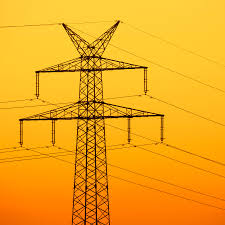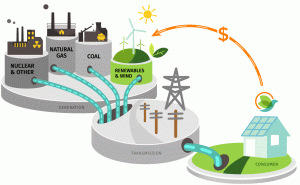 July 2020
July 2020
Electricity powers our life. It runs our lights, computers and phones. Without electricity our condo homes would not have elevators, heating, air conditioning or kitchen appliances. Our buildings would be limited to about five stories.
Our electrical grid is about 100 years old. Power plants that generate electricity are 30 percent to 40 percent efficient. They are located far from users of electricity so require delivery systems that traverse great distances.
Electricity is a major, if not the largest, expense in condo communities. Our buildings are designed to minimize that expense.
Lifestyles and needs have changed since our 100 year old electricity system was created. Change is overdue to make the system more practical and less expensive.
 A more efficient electrical grid is likely to be more flexible, multi-faceted and multi-purpose.
A more efficient electrical grid is likely to be more flexible, multi-faceted and multi-purpose.
- Sources of electricity will likely include solar and wind systems.
- Improved battery capabilities will store excess electricity created during low use periods.
- Electricity will flow two ways – to and from users of electricity.
- Communities may generate much of the electricity they require. Those in need of electricity will receive it from the grid as is done today. Those generating excess electricity will provide it to the grid thus reducing their utility costs and generating income from this excess.
- The electrical grid will be internet enabled. The grid will communicate with buildings to better control generation, transport and use of electricity.
- Internet access will be powered through the electrical grid with lights used to house connections in place of today’s routers and modems. Separate wiring and equipment for connecting to the internet will not be required.
Buildings of tomorrow will be designed to work more closely with the electrical grid and the internet. Some of these capabilities are currently in use or test. They will improve over time and become part of our basic infrastructure. All of this will affect the availability of, access to and functionality of a 21st century electrical grid.








